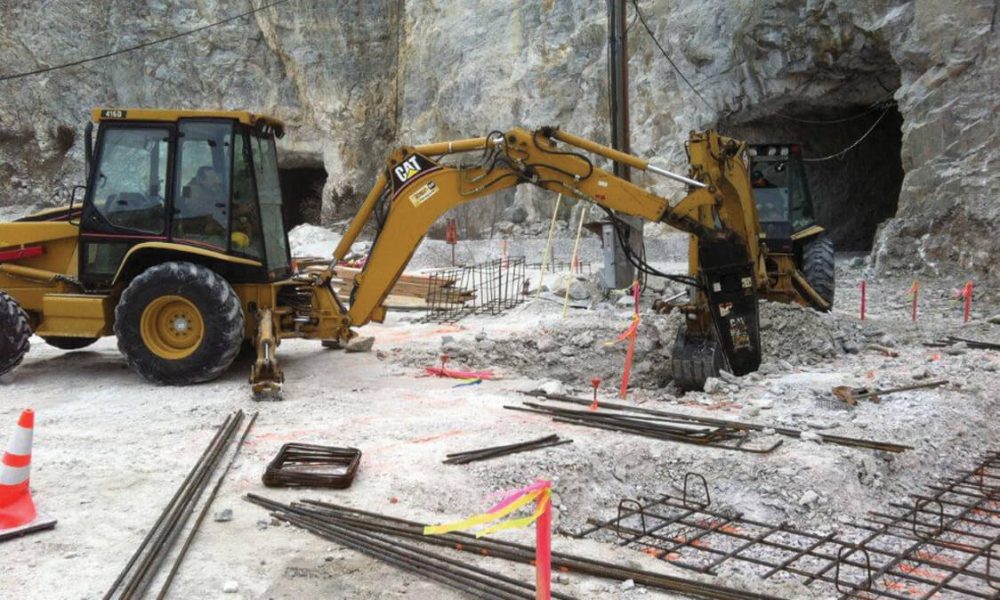Residential Excavating Ohio - Specialized Excavation for Ohio Residences
Extensive Exploration: The Scientific Research Behind Superior Excavation Practices
From old hand devices to modern-day hydraulic excavators, the advancement of excavation techniques has been a testament to human ingenuity and technical improvements. What genuinely sets exceptional excavation practices apart is a deep understanding of geological concepts, combined with the usage of advanced devices and techniques.
Development of Excavation Techniques
Throughout background, the advancement of excavation methods has played a vital function in advancing construction techniques and historical discoveries. From the simple tools made use of by our forefathers to the advanced equipment employed in modern-day times, the development of excavation techniques has actually substantially transformed just how we approach numerous jobs.
In old times, manual work with fundamental devices such as wheelbarrows, pickaxes, and shovels was the key method of excavation. This labor-intensive procedure limited the deepness and scope of excavations, usually leading to slow-moving development and limited access to specific sites. As civilizations advanced, so did the devices and techniques made use of for excavation.
The Industrial Transformation noted a transforming factor in excavation techniques with the introduction of steam-powered machinery. In contemporary times, technology plays a critical duty in excavation, with advancements like GPS systems, drones, and 3D scanning improving precision and effectiveness in the field.
Role of Technology in Excavation

The integration of sophisticated modern technology has basically reinvented the field of excavation, boosting precision and performance to extraordinary levels - lancaster excavation. One of the crucial technological innovations that has actually considerably impacted excavation techniques is the use of GPS systems.
Moreover, the development of 3D modeling and simulation software has streamlined the preparation procedure for excavation projects. Designers and operators can currently imagine the entire excavation process prior to beginning, determining prospective obstacles and enhancing operations. In combination with this, the implementation of drones in excavation activities has actually facilitated aerial surveys, volumetric dimensions, and site assessments with unmatched rate and accuracy.
Geological Concepts in Excavation
An understanding of geological concepts is crucial for making sure the structural stability and stability of excavation websites. Geological factors play a vital duty in establishing the feasibility and safety of excavation projects (lancaster excavation). One crucial geological principle to think about is the type of soil or rock present at the site. Different dirt kinds, such as clay, crushed rock, or sand, have varying levels of security and call for various excavation methods. As an example, cohesive soils like clay may require additional assistance to protect against collapses, while sandy dirts might be susceptible to erosion during excavation.
By carrying out extensive geological studies and analysis, excavators and engineers can establish techniques to mitigate threats and make sure the effective conclusion of excavation projects. Inevitably, incorporating geological principles right into excavation techniques is essential for attaining secure, efficient, and sustainable outcomes.

Most Recent Devices for Excavation
In the world of excavation techniques, modern technologies in devices have actually changed the performance and accuracy of excavation procedures. One of the most up to date tools making waves in the market is the use of drones geared up with advanced imaging innovation. go now These drones can provide detailed airborne studies of excavation websites, providing real-time data on topography and potential threats. This details help in much better planning and decision-making throughout the Recommended Reading excavation procedure.
One more cutting-edge tool obtaining popularity is the implementation of 3D printing modern technology for developing custom-made excavation equipment. This permits the manufacturing of specialized tools that are customized to the certain requirements of a project, boosting effectiveness and lowering downtime.
Moreover, developments in products scientific research have led to the advancement of stronger and extra long lasting excavation tools. dump truck companies in ohio. Tungsten carbide-tipped excavator accessories, as an example, offer exceptional efficiency in difficult ground conditions, improving productivity on-site
Science's Influence on Excavation Practices

Additionally, scientific study on dirt mechanics and geotechnical design has supplied important understandings into dirt actions, enabling excavation specialists to make informed decisions regarding excavation techniques and soil stablizing techniques. On the whole, science proceeds to drive innovation and improvement in excavation methods, making excavation projects much more effective, cost-efficient, and lasting.

Final Thought
To conclude, the evolution of excavation techniques has actually been substantially affected by improvements in innovation and a deeper understanding of geological concepts. The most recent tools and equipment made use of in excavation have actually enhanced efficiency and accuracy in the area. The application of scientific knowledge has actually substantially improved excavation practices, bring about a lot more effective and sustainable methods for digging deep into different types of products.
In the world of excavation techniques, modern advancements in devices have transformed the effectiveness and precision of excavation processes. By leveraging clinical concepts, the excavation market has been able to considerably improve performance, precision, and security in excavation processes. GPR allows excavation groups to non-invasively check and map subsurface structures, utilities, and possible threats, allowing them to prepare excavation projects with greater accuracy and minimized this hyperlink danger of accidents.
In addition, scientific research on soil technicians and geotechnical design has given useful insights into dirt behavior, allowing excavation specialists to make enlightened decisions concerning excavation approaches and dirt stablizing techniques. Overall, scientific research continues to drive development and enhancement in excavation practices, making excavation tasks much more reliable, economical, and sustainable.